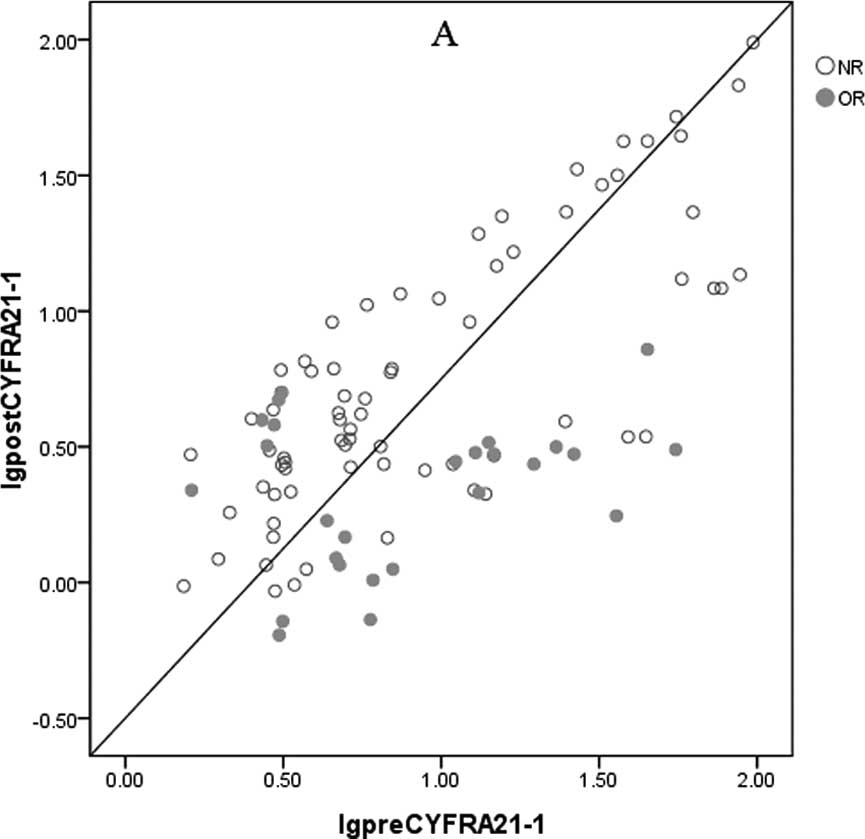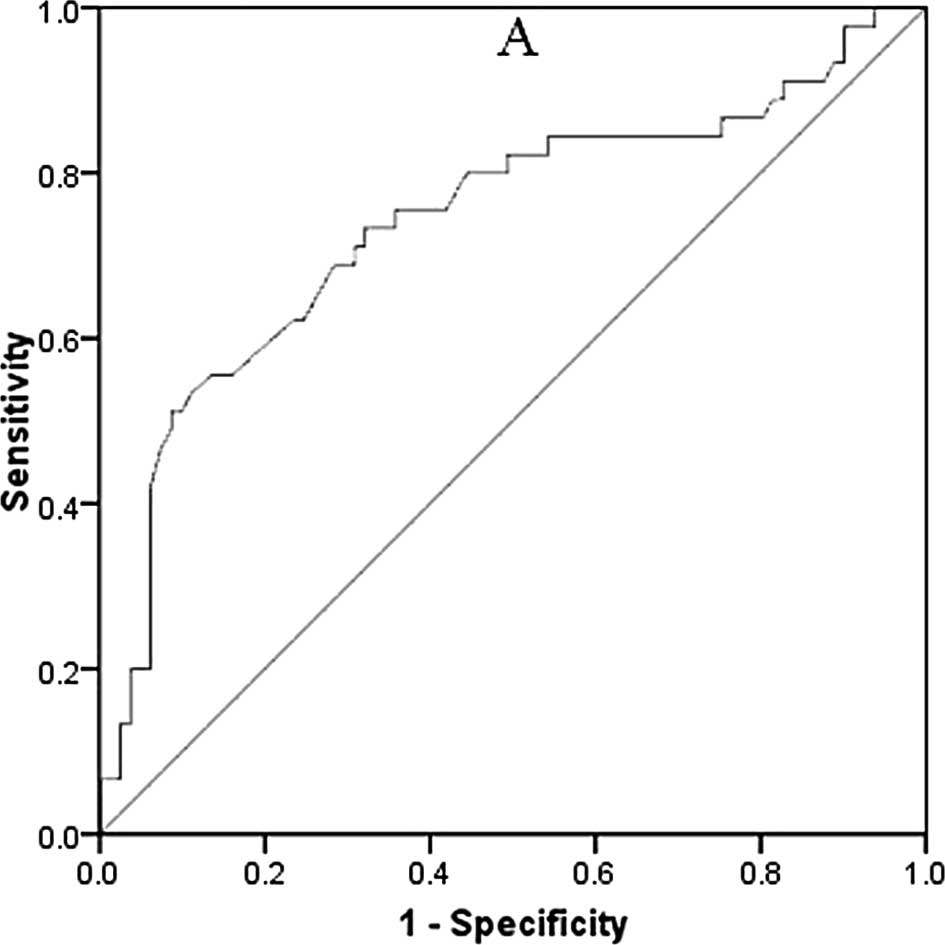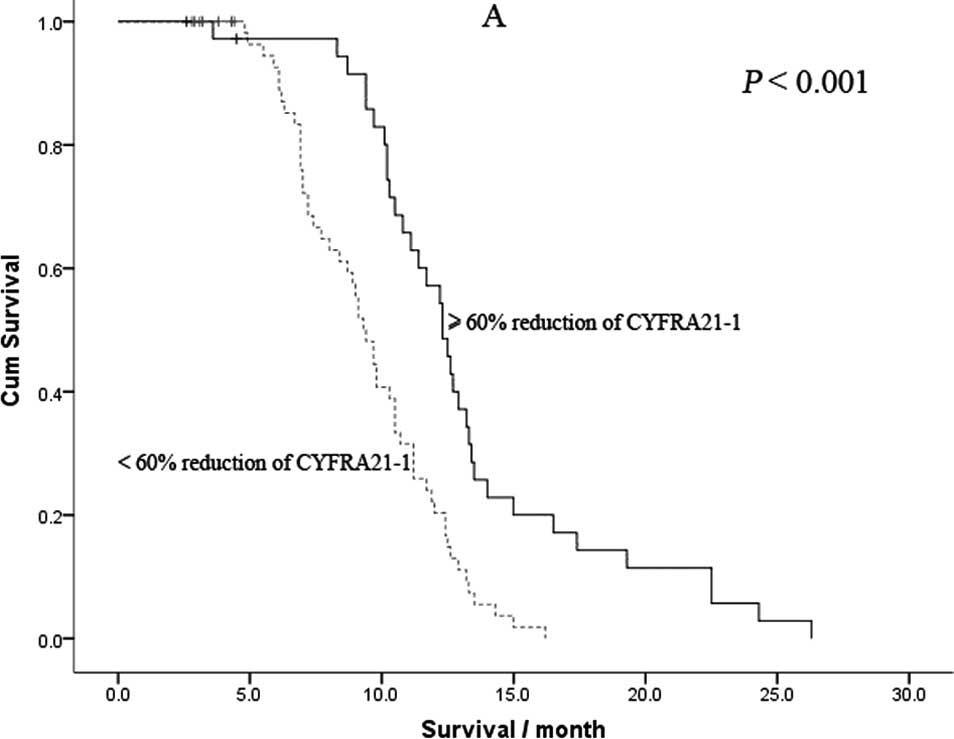|
1.
|
Jemal A, Murray T, Samuels A, Ghafoor A,
Ward E and Thun MJ: Cancer statistics, 2003. CA Cancer J Clin.
53:5–26. 2003. View Article : Google Scholar
|
|
2.
|
Jemal A, Siegel R, Xu J and Ward E: Cancer
statistics, 2010. CA Cancer J Clin. 60:277–300. 2010. View Article : Google Scholar
|
|
3.
|
Lovly CM and Carbone DP: Lung cancer in
2010: one size does not fit all. Nat Rev Clin Oncol. 8:68–70. 2011.
View Article : Google Scholar : PubMed/NCBI
|
|
4.
|
Ramalingam SS, Dahlberg SE, Langer CJ,
Gray R, Belani CP, Brahmer JR, Sandler AB, Schiller JH and Johnson
DH; Eastern Cooperative Oncology Group: Outcomes for elderly,
advanced-stage non small-cell lung cancer patients treated with
bevacizumab in combination with carboplatin and paclitaxel:
analysis of Eastern Cooperative Oncology Group Trial 4599. J Clin
Oncol. 26:60–65. 2008. View Article : Google Scholar
|
|
5.
|
Pujola JL, Barlesia F and Daurésa JP:
Should chemotherapy combinations for advanced non-small cell lung
cancer be platinum-based? A meta-analysis of phase III randomized
trials. Lung Cancer. 3:335–345. 2006. View Article : Google Scholar : PubMed/NCBI
|
|
6.
|
Lilenbaum RC, Langenberg P and Dickersin
K: Single agent versus combination chemotherapy in patients with
advanced non-small cell lung carcinoma: a meta-analysis of
response, toxicity, and survival. Cancer. 82:116–126. 1998.
View Article : Google Scholar : PubMed/NCBI
|
|
7.
|
Nishino M, Jackman DM, Hatabu H, Yeap BY,
Cioffredi LA, Yap JT, Jänne PA, Johnson BE and Van den Abbeele AD:
New Response Evaluation Criteria in Solid Tumors (RECIST)
guidelines for advanced non-small cell lung cancer: comparison with
original RECIST and impact on assessment of tumor response to
targeted therapy. AJR Am J Roentgenol. 195:W221–W228. 2010.
View Article : Google Scholar
|
|
8.
|
Jin B, Huang AM, Zhong RB and Han BH: The
value of tumor markers in evaluating chemotherapy response and
prognosis in Chinese patients with advanced non-small cell lung
cancer. Chemotherapy. 56:417–423. 2010. View Article : Google Scholar : PubMed/NCBI
|
|
9.
|
Birchard KR, Hoang JK, Herndon JE Jr and
Patz EF Jr: Early changes in tumor size in patients treated for
advanced stage non-small cell lung cancer do not correlate with
survival. Cancer. 115:581–586. 2009. View Article : Google Scholar : PubMed/NCBI
|
|
10.
|
Buccheri G and Ferrigno D:
Cytokeratin-derived markers of lung cancer. Expert Rev Mol Diagn.
1:315–322. 2001. View Article : Google Scholar : PubMed/NCBI
|
|
11.
|
Rami-Porta R, Crowley JJ and Goldstraw P:
The revised TNM staging system for lung cancer. Ann Thorac
Cardiovasc Surg. 15:4–9. 2009.PubMed/NCBI
|
|
12.
|
Hanagiri T, Sugaya M, Takenaka M, Oka S,
Baba T, Shigematsu Y, Nagata Y, Shimokawa H, Uramoto H, Takenoyama
M, Yasumoto K and Tanaka F: Preoperative CYFRA 21-1 and CEA as
prognostic factors in patients with stage I non-small cell lung
cancer. Lung Cancer. 74:112–117. 2011. View Article : Google Scholar : PubMed/NCBI
|
|
13.
|
Ando S, Suzuki M, Yamamoto N, Iida T and
Kimura H: The prognostic value of both neuron-specific enolase
(NSE) and Cyfra21-1 in small cell lung cancer. Anticancer Res.
24:1941–1946. 2004.PubMed/NCBI
|
|
14.
|
Sung HJ and Cho JY: Biomarkers for the
lung cancer diagnosis and their advances in proteomics. BMB Rep.
41:615–625. 2008. View Article : Google Scholar : PubMed/NCBI
|
|
15.
|
Barak V, Goike H, Panaretakis KW and
Einarsson R: Clinical utility of cytokeratins as tumor markers.
Clin Biochem. 37:529–540. 2004. View Article : Google Scholar : PubMed/NCBI
|
|
16.
|
Arrieta O, Saavedra-Perez D, Kuri R,
Aviles-Salas A, Martinez L, Mendoza-Posada D, Castillo P, Astorga
A, Guzman E and de la Garza J: Brain metastasis development and
poor survival associated with carcinoembryonic antigen (CEA) level
in advanced non-small cell lung cancer: a prospective analysis. BMC
Cancer. 9:1192009. View Article : Google Scholar : PubMed/NCBI
|
|
17.
|
Horst AK and Wagener C: CEA-related CAMs.
Handb Exp Pharmacol. 165:283–341. 2004. View Article : Google Scholar : PubMed/NCBI
|
|
18.
|
Wang CY, Huang MS, Huang MH, Lee HC and
Hsu HS: Persistently high serum carcinoembryonic antigen levels
after surgery indicate poor prognosis in patients with stage I
non-small-cell lung cancer. J Surg Res. 163:e45–e50. 2010.
View Article : Google Scholar : PubMed/NCBI
|
|
19.
|
Cho WC: Potentially useful biomarkers for
the diagnosis, treatment and prognosis of lung cancer. Biomed
Pharmacother. 61:515–519. 2007. View Article : Google Scholar : PubMed/NCBI
|
|
20.
|
Nisman B, Biran H, Heching N, Barak V,
Ramu N, Nemirovsky I and Peretz T: Prognostic role of serum
cytokeratin 19 fragments in advanced non-small-cell lung cancer:
association of marker changes after two chemotherapy cycles with
different measures of clinical response and survival. Br J Cancer.
98:77–79. 2008. View Article : Google Scholar
|
|
21.
|
Ardizzoni A, Cafferata MA, Tiseo M,
Filiberti R, Marroni P, Grossi F and Paganuzzi M: Decline in serum
carcinoembryonic antigen and cytokeratin 19 fragment during
chemotherapy predicts objective response and survival in patients
with advanced non-small cell lung cancer. Cancer. 107:2842–2849.
2006. View Article : Google Scholar
|













